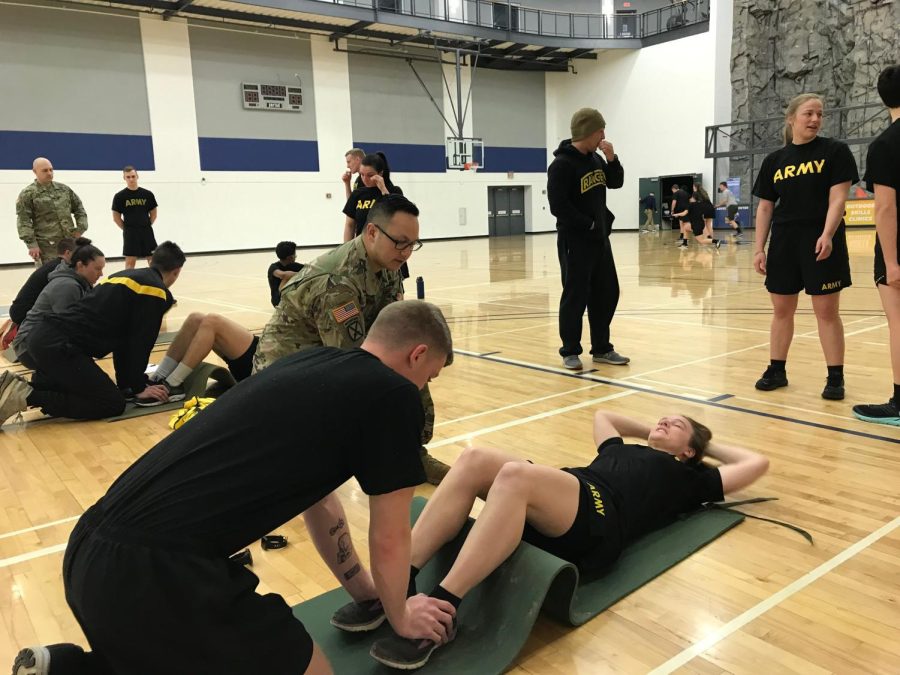Taking the final PT test determines if seniors get to commission
March 1, 2020
For the average person, running two miles within 11 minutes is not something they are willing to do at the crack of dawn. Seniors in the ROTC program graduating this semester are taking one last physical fitness test that will go on their record when they go into their assigned branch in the Army.
The nine seniors taking the test this semester will be marked on how they did when it comes to push-ups, sit-ups and two-mile run tests. Each senior already has an idea of what part of the Army they will join, such as public service, combat, resource and many other branches.
However, if someone fails the test and does not retake it until they pass, they will not be able to commission into the Army. Any scholarship money that was given to them must be paid back and it automatically makes the person look bad whenever it comes to deciding which branch they join. They are still able to get a degree, but they will have to retake the test again later in the semester.
The test began with push-ups. ROTC members have two minutes to do as many as possible. Members are allowed to hold a resting position, but not for too long before their time runs out. When the whistle blows, each person begins his or her push-up challenge with speed, strong breaths in-and-out and intense looks on their faces.
While some members break the pace and slow down, others continue to speed up and break the score that is needed to pass; men are required to do 42 push-ups and women are requred to do 30. Red faces and shaky arms are seen within the members, while their peers who are not testing yell and scream, “You can do it! Just a couple more!”
Shortly after, members move onto the next test: sit-ups. Members are allowed to hold each other’s feet down while taking the test, which allows the test taker to be more flexible. Just like with push-ups, members have two minutes to as many sit-ups as they possibly can.
Lastly, the two-mile run awaits the members and takes up the rest of their energy. Members are allowed to run along with someone for moral support but aren’t allowed to be pulled or pushed physically by that person.
Erin Jones, battalion executive officer, said the hardest part of the test is the two-mile run. Members start off close together through the first lap, but shortly after, the distance begins to grow. Some slow down and fall behind, while others speed up.
“The run is the most challenging thing because you really have to work for it,” Jones said. “To me, good lungs just don’t come easy, you really have to work outside of it.”
The nine seniors who took the test this semester were all able to pass on the first try, which was something that has not happened in the last three to four years. In the last couple of years, there was always one or two seniors that had to retake the test.
In all three tests, members can stop whenever they want, but stopping too early has the consequence of being left behind in the race.
Bridget Lin covers ROTC and military. Contact her at [email protected].












